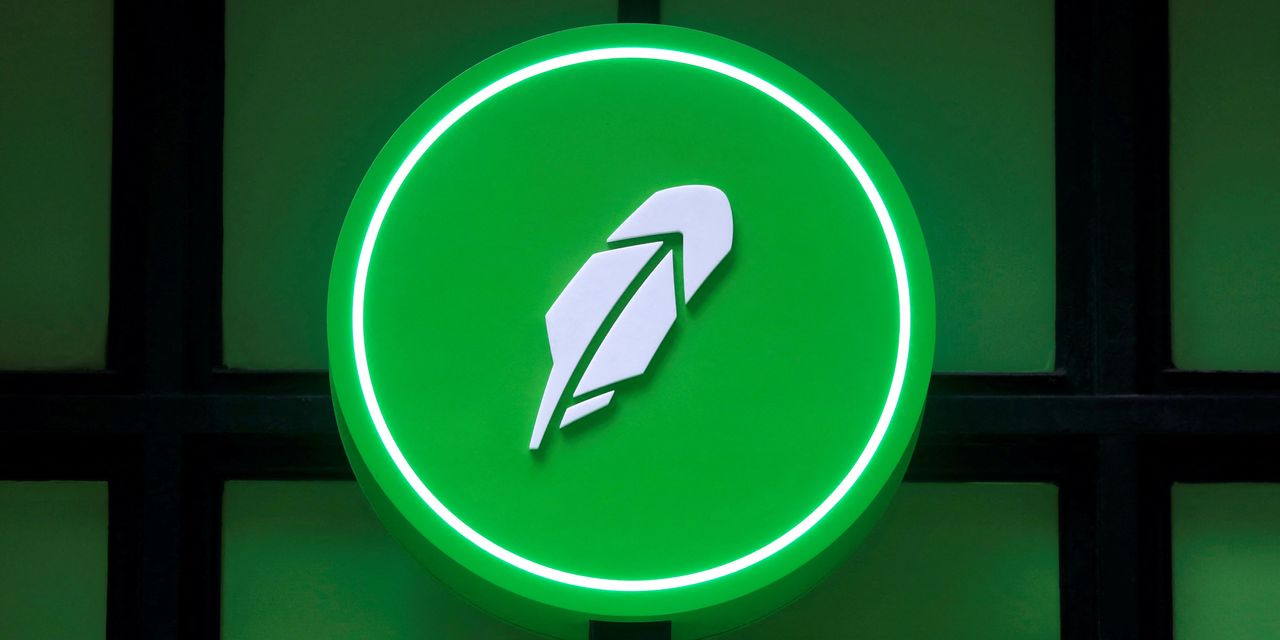
Robinhood Markets HOOD -6.45% ’ business is seeing some stability. Whether markets believe it is another matter.
The meme-stock driven events of a year ago were wild, to say the least, for Robinhood, and for markets in general. Since then, though, by some measures, things have been relatively steady for the upstart online brokerage: Robinhood has now produced roughly the same results in equities and options trading for three quarters in a row: about $50 million in equity transaction-based revenue and more than $160 million for options.
Even crypto revenue, which dropped sharply from the second to third quarter, only fell a bit into the fourth quarter, to $48 million. Average revenue per user was just a dollar lower in the fourth quarter, at $64, than in the third quarter.
Perhaps this could give investors a base to work from as the company’s market value continues to decline. Its market capitalization Thursday was only two-thirds greater than the available cash and equivalents it had at the end of 2021.
Sustainability might be somewhat elusive, though. Already, Robinhood said it anticipates total net revenue to be below $340 million in the first quarter of this year. That would be down from $363 million in the fourth quarter. The company said that it began 2022 seeing trading activity below what it saw in the fourth quarter. Though it has seen an uptick in engagement in the last few days, the company warned that it was too soon to say whether that is the new trend.
The case for Robinhood’s shares being a steal rests in part on its customers now being valued relatively very cheaply, at less than $500 per net funded account, well below the thousands of value for an account at online brokerage shops such as E*Trade in the past, and certainly at giant Charles Schwab today.
Even if customer growth stagnates, Robinhood still could see much more revenue from customers with products such as retirement accounts, spending-and-saving tools, faster money movements, expanded crypto services, and more, and justify a higher valuation.
Robinhood is still putting some important pieces of its infrastructure in place, too. It is now allowing customers to transfer outside assets into the firm, so its most loyal customers might become far more valuable.
It is also aiming to extract more revenue from lending out shares in the market, adding so-called “fully paid” stock lending. The existing lending program was already about 8% of fourth-quarter total net revenue. The company will also earn more, due in part to its cash pile, as interest rates rise.
Even so, some of Robinhood’s potential new revenue sources ultimately could still be driven by customers’ willingness to put money to work. That willingness is a huge question mark for 2022.
It is hard to judge how many of its products will be up and running and would still see significant growth if people became more defensive and cautious and their savings dwindled; even retirement products such as Individual Retirement Accounts could be affected by a risk-off mentality.
Crypto remains a big wild card too. Robinhood said on Thursday that it has updated its pricing agreements with crypto market makers and added another venue to increase competition, which was resulting in bigger rebates.
That could point toward higher revenue on steady crypto activity. But given how huge volume in this market was at times last year, new pricing might not necessarily mean overall crypto transaction revenue will grow in 2022 if activity keeps trending lower. The coming all-customer release of the company’s crypto wallet could be a swing factor.
The prospects are there for many new or improved revenue streams, but Robinhood’s stock is trading sharply lower in after-hours activity. It seems that the market wants to see it before it will believe it.
Write to Telis Demos at [email protected]
Copyright ©2022 Dow Jones & Company, Inc. All Rights Reserved. 87990cbe856818d5eddac44c7b1cdeb8








